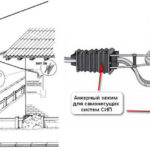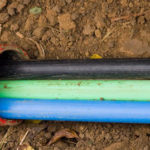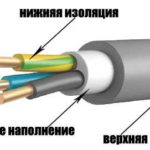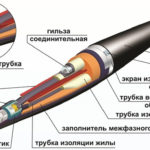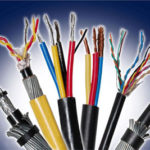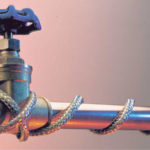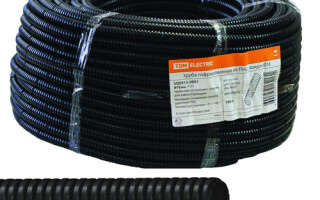During electrical work it is often necessary to lay electrical wiring openly. To ensure protection of electrical cables from mechanical influences, precipitation and other factors, to produce a neat and aesthetic wiring or low-voltage networks use the corrugated tube or, as it is also called, corrugated pipe.
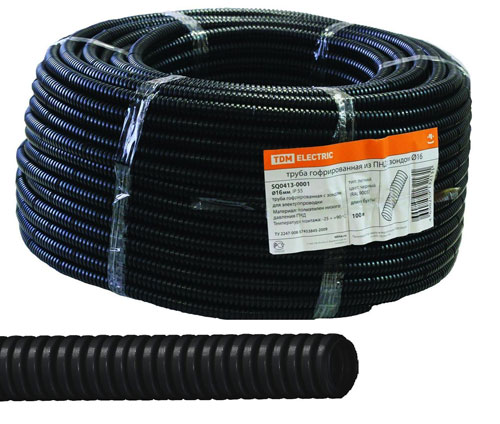
Content
What is a corrugated tube and where it is applied
Electrical wiring corrugation - is a corrugated tube for routing electrical cables to protect them or to protect structures. Laying of electrical cable in corrugated tubes is used in various situations for open or hidden wiring.
Concealed wiring
Concealed - is the installation of electrical wiring inside the structures of walls, floors and ceilings, behind finishing materials. It is conditionally divided into the following types of installation:
Wiring inside non-combustible structures is made in potholes in walls and ceilings, in the floor screed or simultaneously with the installation of the bearing structures (e.g. in concreting). In this case, the corrugated tube is used for ease of installation, protection against crushing the cable and the possibility of replacing electrical wiring without disturbing the finishing material, cutting or dismantling of walls, ceilings or floors. When laying the corrugated tube with cable inside the structures made of non-combustible materials, the PUE allows the use of any type of corrugated tubes.
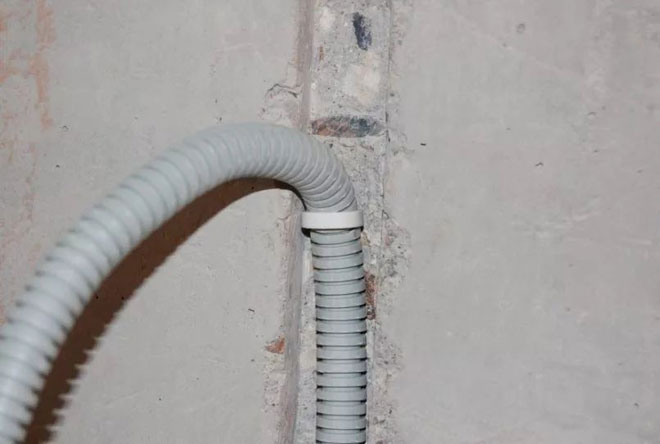
Laying behind finishing materials or in false spaces has the same purposes as non-combustible constructions (protection against mechanical damage, the possibility of replacing the wiring if necessary), but with the requirements for installation, as for laying on combustible materials. The fact that the finishing materials often contribute to combustion, so for this installation requirements are quite strict. It is important to use non-combustible or metal corrugations at this installation.
Underground installation carried out in the production of works on landscaping for the wiring of electric power lines to the lighting fixtures and various equipment (pumps of irrigation systems, gate and door opening systems), when laying low-current networks for security systems or telephone lines and in other situations. The main requirement for such laying of the corrugated cable is waterproof and highly resistant to mechanical deformation (rigidity).
Open cabling
Open cabling is carried out through the load-bearing and enclosing structures, finishing materials and when installed outdoors to the facades of buildings or through the air.
Routing through combustible structural materials means installation of electrical wiring in corrugated tape to the ceiling and walls with combustible finish or made of wood, plastic and other combustible materials. For fire safety reasons, non-combustible (metal) corrugated tubes are used for fire safety reasons. In this case, according to the PUE, it is forbidden to use plastic corrugated pipes made of self-extinguishing and non-combustible materials.
Installation in non-combustible structures and materials is carried out by any corrugated plastic tubes that do not propagate flammable. Perhaps the use of metal corrugation to improve the aesthetics of the installation or when used in special circumstances (aggressive environments, the probability of mechanical damage).
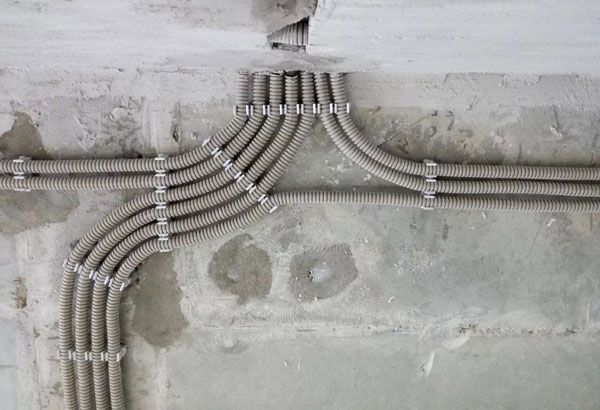
Laying outside of buildings and structures is used to install lighting or laying of power and low-voltage networks for various purposes on the facades of buildings and fences, as well as in the air between buildings. The corrugation used in this case also must not propagate combustion and must be resistant to precipitation, UV radiation and be durable.
Laying cables in rooms with fire or explosion hazards only by using corrugated metal conduits in combination with a flame-retardant electric cable.
Variety by material of manufacture
Corrugated tubes for electric cables are made of metal or special plastic. In construction, corrugated tubes made of the following materials are widely used:
Polyvinylchoride (PVC) - lightweight material that has self-extinguishing properties. The corrugations of this material are made in gray color. PVC cable ducts are used in dry indoor areas because they are sensitive to UV radiation and are not water-resistant. Were most common due to availability (low price) and flexibility of use.
Polypropylene (PPP) - material that does not support and does not spread flame, resistant to UV radiation. Bellows of this material are water-resistant and used when laying networks outside the premises or in rooms with high humidity. The color of such corrugations is blue.
Low pressure polyethylene (HDPE) - moisture resistant material. Such tubes are also used in wet areas or on the street. HDPE is a flammable material, so it is not used in wooden premises. Permission is granted to use HDPE corrugated in screeds or in constructions made of non-combustible materials. It is made in orange or black color.
Stainless steel - is the most resistant and expensive material for manufacturing corrugated tubes. Stable when used in corrosive environments and perfectly protects the cable from mechanical damage (For example, from rodents or accidental damage during construction and repair work). Used indoors on combustible and non-combustible materials, inside constructions and outdoors for underground and aerial cable laying.
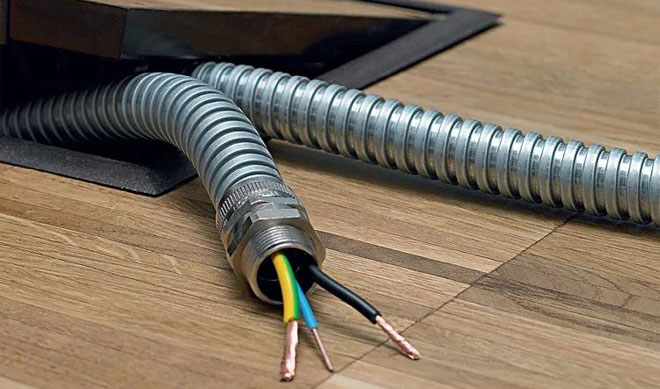
Polyamide (PA) - Very flexible material that is resistant to mechanical and chemical effects. Has a wide range of operating temperatures (from -60 to + 150 degrees Celsius.). Corrugated tubes made of this material are non-combustible and can be used both inside and outside buildings. They are produced in dark gray color.
How to choose a corrugated tube for wiring
To choose a corrugated pipe, you need to know the diameter of the electrical cable and the conditions in which the corrugated pipe will be laid. When selecting the diameter, the following recommendations should be taken into account:
- for lighting cable, to switches or for signal lines are used corrugations with a diameter of 16 mm;
- to sockets or for laying coaxial cable corrugations with a diameter of 20-25 mm are used;
- for wiring to junction boxes, depending on the cross section of cable from 25 to 32 mm;
- for cable routing to electric boards, corrugations with diameter of 32 mm should be used;
- for larger cable diameters, corrugations with a diameter of 40 mm and larger are used.
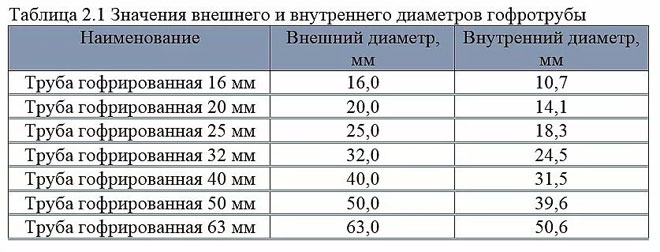
Approximate table of diameter dependence of corrugation from section and number of wires of electric cable NYM or VVG is presented below:
| Electrical cable cross section, mm² | Number of wires, pcs. | Outer diameter of corrugation, mm |
|---|---|---|
| 1,5 | 2/3/4/5 | 16/16/20/20 |
| 2,5 | 2/3/4/5 | 16/16/20/25 |
| 4 | 2/3/4/5 | 20/20/25/25 |
| 6 | 2/3/4/5 | 20/25/32/32 |
| 10 | 2/3/4/5 | 25/32/32/40 |
| 16 | 2/3/4/5 | 32/32/40/40 |
| 25 | 2/3/4/5 | 32/40/50/50 |
It is especially important when choosing corrugated pipe to be guided by the conditions in which to install and operate the corrugated pipe with electrical cable. Each material is suitable for different installation options. Briefly you can specify the following materials and conditions of their use:
- PVC: dry and enclosed spaces;
- PPP .wet rooms, outdoors, underground installation;
- HDPE: damp rooms, outdoor, underground installation;
- Metalin any environment;
- PAin all conditions.
Installation tips
Running cable into a corrugated tube
Laying the cable in the corrugated tube is done with a special string installed by the manufacturer inside the corrugation. The sequence of work when installing electric cable in the pipe is as follows:
- Corrugated pipe is stretched on a long straight section. In order to pull the cable inside the corrugation, it is necessary to have a large space to fully unwind.
- The end of the electrical cable is connected to the string, the connection point is wrapped with duct tape for free movement without the wire catching inside the pipe.
- A minimum of two people are needed to do this job. One person holds the corrugated pipe at one end, the other gently and without jerking pulls the string with the electric cable.
- After the cable appeared on the back side of the corrugation - it is fixed (e.g. with masking tape) from both sides to prevent it from slipping back into the corrugation.
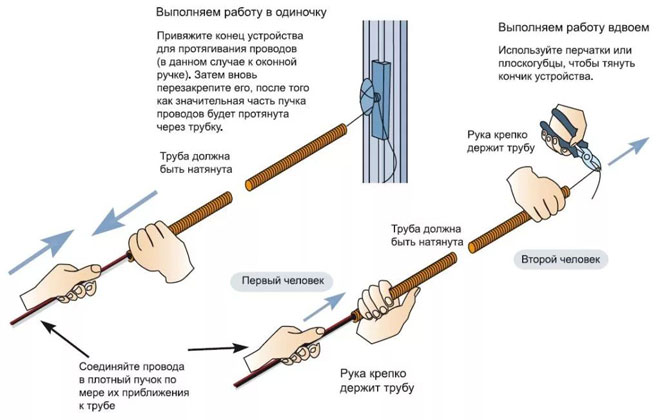
Fixing corrugated pipes
When installing a corrugated pipe with an electrical cable using a variety of methods of fixing. The most common are:
- mounting with plastic clipsMounting with plastic clips: used when mounting on all types of structures;
- mounting with dowel clamps or dowel studs: used when installing corrugations on concrete and wooden structures;
- installation with plastic ties to the metal cable or frame: applied when installing the corrugation in the street or with the metal frame (as in the case of plasterboard ceilings);
- installation in chinks With subsequent termination: suitable for concrete and brick walls, plaster.
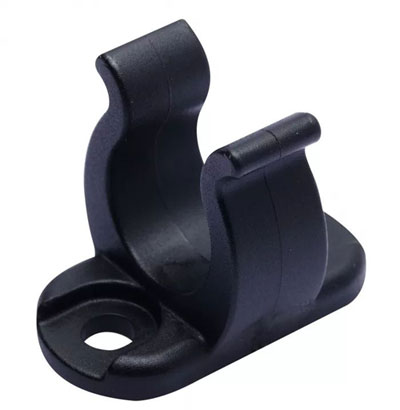
Mistakes when installing cable in corrugations
The most common and common mistake when installing cable in a corrugated tube is the wrong type of corrugated pipe based on usage conditions. In order for the electrical wiring to serve long and reliable you need to follow the recommendations listed above in this article on the proper selection of corrugated pipe for your purposes.
Related articles:
